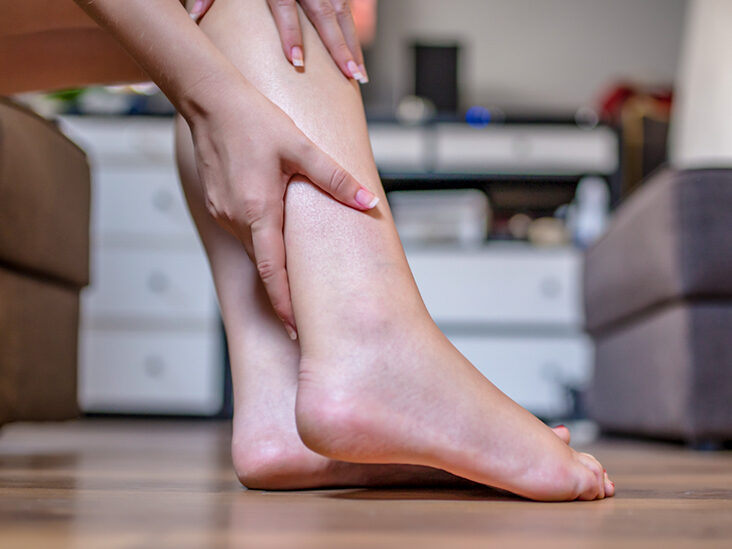Swelling of the ankles or feet is quite common, and is one of the most frequent issues I deal with in both primary care and long term care. Swelling, or “edema”, can occur just about anywhere in the body. It is basically a buildup of fluid (water/blood) in our body tissue. It can be uncomfortable and inconvenient, but it is usually not serious. HOWEVER, some causes of swelling CAN indicate a serious underlying condition, so it should be brought to the attention of your Primary Care Provider (PCP) promptly.
If you have had an evaluation for swelling of the ankles or feet, and yours is found to be chronic or recurrent, but not due to a serious underlying condition, then this discussion may be a good source of advice and reassurance for you.

Possible causes of lower extremity swelling (there are many) are listed here… it is not a complete list, but will help you to understand what can contribute to swelling of the ankles.
Underlying medical conditions:
- Venous insufficiency - this VERY common (~70%) cause is due to failing or “floppy” valves in the veins of your legs. This tends to cause “dependent edema”, because it occurs in parts of the body which are “dependent” to gravity – i.e. legs/feet, or the back side/sacrum/pelvic area (in patients who are in bed for longer periods of time.)
- More serious conditions of the veins or arteries (arterial clot or DVT – Deep Vein Thrombosis)
- Compression of one of the larger veins in the upper leg or abdomen (tumor, anatomic abnormality, even tight devices or clothing)
- Cellulitis or other infection in the swollen area
- Lymphedema (backing up of lymph, which is another network of small vessels that drain extra fluid away from our tissues)
- Diseases of endocrine organs (thyroid, adrenal glands, pituitary, etc.)
- Conditions of other organs or systems (heart failure, liver disease, kidney disease, even sleep apnea, etc.)
- Low protein in the blood (can be from organ disease, poor nutrition, etc.)
Medications – swelling can be a side effect of several medications. Most notably:
- calcium channel blockers (often used for blood pressure or heart rate control) – amlodipine, verapamil, diltiazem, etc.
- systemic steroids of any kind, including hormone treatments (prednisone, medrol, estrogens, progesterones, testosterone, etc.)
- NSAIDS (such as ibuprofen, indomethacin, naproxen, etc.).
Injury of the foot or ankle – whether acute, previous or recurrent.
Other joint issues, such as arthritis or gout (usually quite painful), or sprains of joint ligaments.
Red Flags – As mentioned, most swelling is not serious, but it is important to watch for some of the following findings, which would be reason to seek immediate medical attention:
Rapid onset, new swelling, or rapidly worsening swelling
Redness, tenderness, warmth, fever
Other symptoms such as confusion, dizziness, sweating, nausea, etc.
Shortness of breath or chest pain
Cold, pale or blue extremity
Pus or drainage
Swelling in just one extremity
Persistent wound or skin breakdown
Again, potential underlying medical causes are varied… and this is the reason to see your PCP about your swelling. If your PCP evaluates your swelling, and tells you that it isn’t serious (and it usually is not), then you can feel reassured, and take some degree of control over your symptoms.
Here are some things a to try or consider if you have periodic, chronic or persistent ankle/foot swelling:
- Elevate your feet (as much as tolerated). The higher the better, as long as it doesn’t cause pain, shortness of breath, etc.
- Compression of your ankles. However, you should discuss this with your PCP, as you should be careful not to impede the blood flow in your arteries, do damage to a wound, or otherwise restrict movement, circulation or feeling.
- Watch/reduce your salty foods… most people in the US consume a diet that is pretty high in sodium. Avoid extra salt, try to choose less processed or concentrated foods (such as those in cans, mixes, or boxes… packaged meats, salty snacks, etc.)
- Range of Motion (ROM) – move, move, move! Actively (under your own power or effort) or Passively (with the assistance of someone else if you are ill, weak, or have some paralysis/paresis). This compresses the veins, and moves the blood/fluid back up toward the heart, where it can be circulated and the extra will ultimately be removed by the kidneys into the urinary system.
- Massage – Similarly to ROM, this is effective in pushing the blood back up toward the heart.
- Make sure to be vigilant for skin breakdown and changes in sensation… which could be Red Flags (mentioned above), and would necessitate a visit to your PCP, or even urgent care/Emergency department.
- Medical management, with diuretics (water pills). This should be only under the guidance of your PCP or specialist.
As you can see, once you have had your swelling evaluated for worrisome cause, you can take charge of some of your own symptom management. By trying some of these measures, you will likely learn a bit about your own body, and your efforts will be appreciated by your at your next visit, because you results can also assist him or her in improving your overall care.
